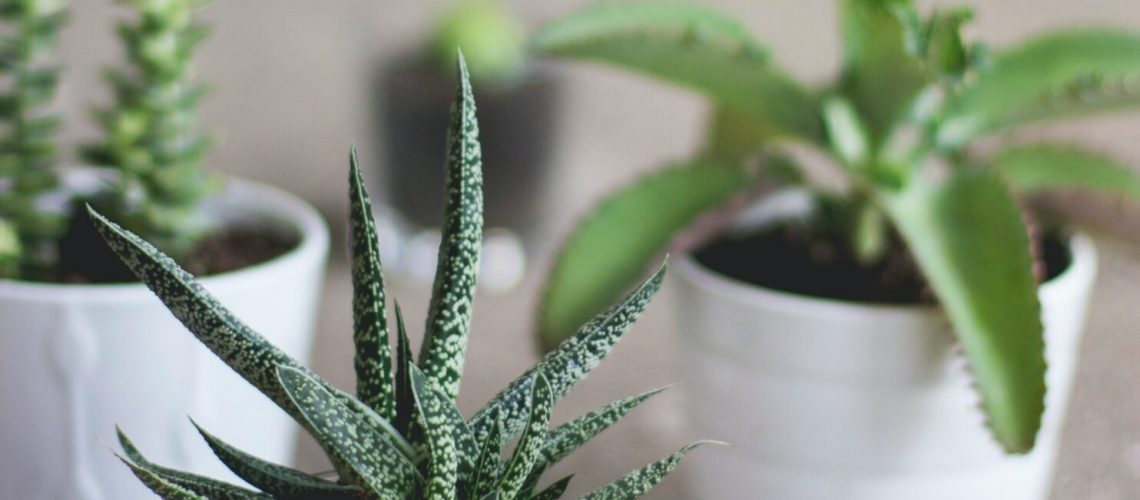What are succulents?
Succulent plants or succulents, are found in dry climates or soil conditions and are plants with leaves or stems that are thickened, fleshy and engorged, usually to retain water. Succulents are popular as indoor and outdoor plants because of their unique appearances. But you may be wondering how to care for succulent plants in your home. One of the keys to caring for your succulents is knowing when and how to transplant them in order to keep them growing and healthy.
Key reasons behind transplanting
One of the most important ways to keep your succulents strong and thriving is to learn how to transplant succulent plants. Transplanting simply means carefully moving them into new soil and new larger pots as they grow. This will allow your plants to get the necessary nutrients for optimal growth, to spread their root systems, and to continue to look beautiful and healthy as they grow. Look for these three key reasons and be ready to transplant your succulents for optimum beauty.
– Soil not nutritious
If your soil is depleted of nutrients then it is not giving your plants what they need to thrive. Over time, even with regular fertilizing, your soil will become depleted and your plants will need repotting. You may notice your plants looking a little sick or tired. This is a sign that they are lacking needed nutrients. Another problem that occurs at the same time is soil compacting. This is when the soil loses its air pockets and nutrients and becomes hardened. Often the big box stores will sell their plants in low nutrient soils so it is good to watch those plants for signs of needing nutrients sooner.
– Plant has outgrown the pot
Look for a couple of signs that your succulent has outgrown its container. The first is, has the plant stopped growing and is there much room for it to grow? If you have a planter with multiple succulent plants together, then ask yourself: are they growing over each other? Do they look a little sick? Can they all manage to grow in that planter? If things are too crowded then it is time to repot your plants. The second sign is to look and see whether your succulents root system is growing out of the pot. Can you see roots poking out from under the pot? If so, then it is time to replant that succulent.
– Health problems
Another important observation is to determine if your plants are suffering from health problems. Are your plants experiencing root rot? This often can only be observed by removing the plant from it’s pot, so again, if the plant is looking sick then it may need replanting in order to get rid of root problems. Another health problem in plants is pests in the soil. Insects, fungi or unwanted bacteria could be causing problems for your plants. In this case it could also be helpful to sterilize your new soil to prevent these pests from returning.
How Often Do Succulents Need to be transplanted?
If you do not remember the last time you transplanted your succulent plant(s), then it is time to do so. Otherwise, most succulents should be transplanted about once a year and at least every two years. This will vary from plant to plant and some may be able to thrive longer, especially with an occasional fertilizing but if you see any of the above signs then it’s time to transplant.
Many people wonder what is the best soil for succulents in pots? New soil is a must! A good commercial potting soil for succulents and cacti is a great place to start. Or you can make your own soil by contacting a local nursery where you can ask what ingredients they recommend for your succulents. Next you want to find a new pot that is big enough to allow for root expansion and plant growth while not dwarfing your succulent plant. You want to carefully extract your plant from its old pot, get rid of all the old soil and gently remove any remaining old soil from your plants roots. Finally, fill your new pot one-third of the way with fresh soil, gently place your succulent on that bottom layer, and fill in the pot around the root system of your plant. Gently push down the soil around the plant to stabilize it but not so hard that you compact the soil too much. Give it some water once it is firmly planted in order to aid its root system in growing and expanding into its new pot.
Suitable Season for transplanting
Almost any season is good for transplanting succulents in the Pacific Northwest since these plants will grow year round here. However, in colder climates transplanting in the spring, summer and fall are most suitable. In fact it can be best to repot your succulents in the spring or early summer in order to allow for maximum growth before the more dormant winter months.
Conclusion
If you have any further questions, if you are looking for good succulent plants or if you need potting soil or pots for your next project, Olmsted’s Nursery in Poulsbo, WA is a great resource for all things plants and gardens. Stop by and see us at 19700 Viking Way NW, give us a call at (360)-598-1802 or visit our website; olmstedsnursery.com.

